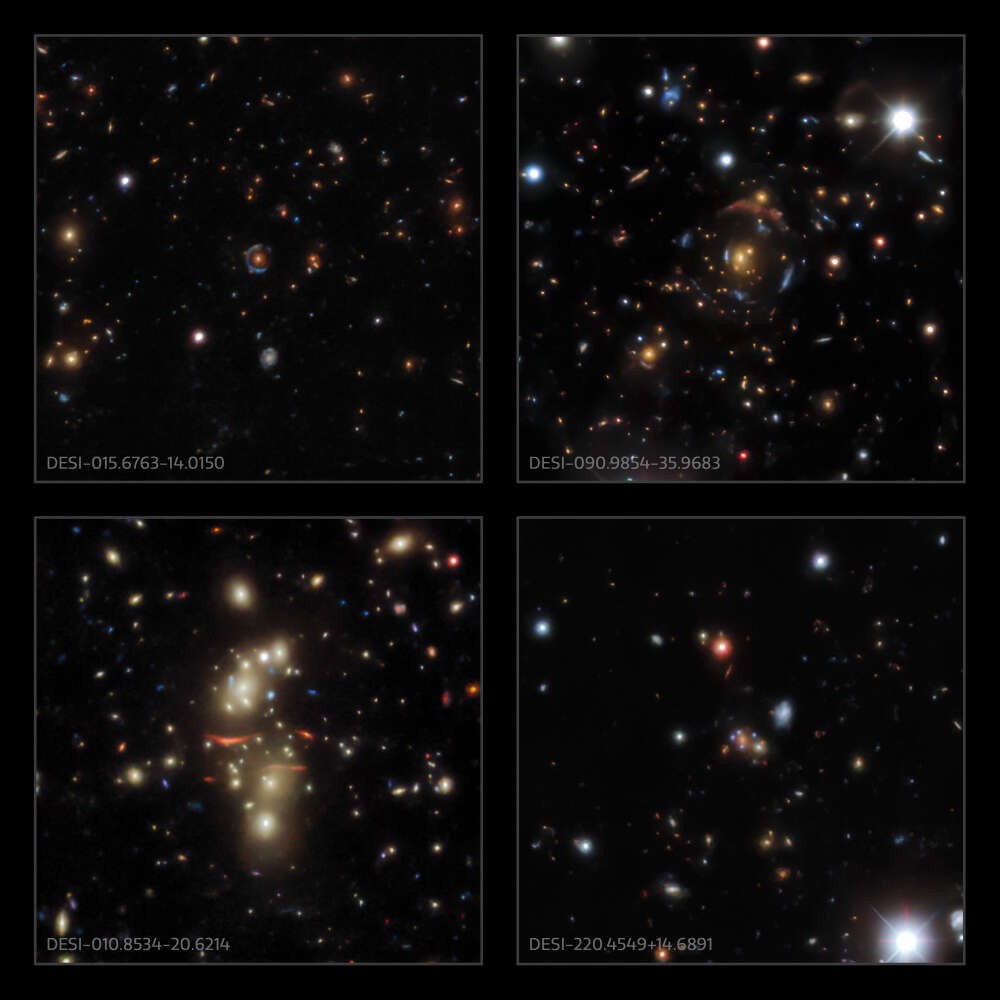An algorithm sifting through the latest set of data from DESI (Dark Energy Spectroscopic Instrument) led to the discovery of 1,210 new gravitational lenses. This work thus doubles the number of these known phenomena.
Thanks to Einstein's general theory of relativity, we know that a massive object (such as a galaxy or a cluster of galaxies) can warp space- time. This distortion of space-time can then be observed in the form of a stretching and distortion of the light emitted by an object located in the background of this massive intermediate (provided of course that the Earth is in line of sight). Distorted images of objects in the background are then magnified, usually appearing as arcs wrapping around the intermediate object.
Thanks to these phenomena called "gravitational lensing", researchers can then observe distant targets that would be us otherwise invisible.
However, astronomers estimate that only one in 10,000 massive galaxies can offer us a phenomenon of gravitational lensing, and their location is not easy. “A massive galaxy distorts the space-time around it, but usually you don't notice this effect. Only when an object is nestled directly behind this giant galaxy is it possible to see a lens “, emphasizes Xiaosheng Huang, of the University of San Francisco.
Two years ago, only about 300 of these events were listed . And a few months ago, there were about twice as many, which is still too few. In an effort to multiply detections of these phenomena, Huang and his team relied on machine learning to inspect the latest large dataset from the DESI Legacy Imaging Surveys. This data was collected at the Cerro Tololo Inter-American Observatory (CTIO) and the Kitt Peak National Observatory (KPNO), both operated by the National Science Foundation.
To analyze the data, Huang and his team used the Berkeley Lab's National Energy Research Scientific Computer Center (NERSC) supercomputer. They also relied on a deep residual neural network, a computational algorithm specially trained to recognize targeted objects. And those efforts paid off! At the end of these analyses, the algorithm had indeed isolated no less than 1,210 new lenses.

With these new candidates, researchers will be able to perform new measurements of cosmological parameters. The key will be to be able to detect distant supernovae "promoted" by massive galaxies. By analyzing the decay curve of their luminosity, researchers will be able to determine their distance, thus making it possible to better understand the Hubble constant which describes the expansion of the universe .